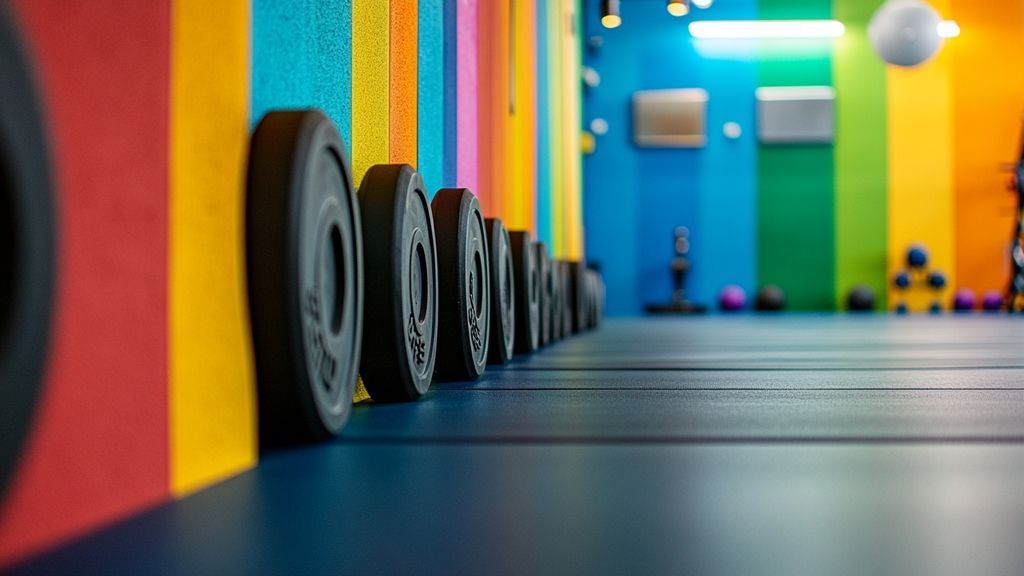Achieving optimal results in CrossFit doesn’t merely depend on your workout intensity; your diet plays an equally crucial role in reaching your fat loss goals. Many athletes and fitness enthusiasts invest tremendous effort into their training routines only to find that the desired physical changes remain elusive. Understanding the nuances of how to fuel your body effectively can make a significant difference.
It’s time to dive deep into the various reasons you might not be losing fat during your CrossFit journey. This analysis will provide insights into dietary adjustments, nutrient timing, and the misconceptions surrounding what it truly takes to let go of unwanted body fat.
Understanding Your Body’s Nutritional Needs
Understanding the basic nutritional requirements is fundamental for anyone involved in CrossFit. As you strive for fat loss, it’s important to recognize that high-intensity workouts demand specific macronutrient profiles that fuel your activities effectively while promoting recovery.
Macronutrients and Their Importance
Macronutrients, which include proteins, fats, and carbohydrates, are the building blocks of your diet. Each macronutrient plays a unique role in your body’s function and performance during CrossFit training.
Proteins
Proteins are essential for muscle recovery and growth, a critical aspect for anyone engaged in high-intensity cross-training. Consuming sufficient amounts of protein aids in rebuilding muscle tissues that suffer micro-tears during intense workouts, which is vital for increasing strength and metabolism. For CrossFit enthusiasts, aiming for around 1.2 to 2.0 grams of protein per kilogram of body weight depending on your specific goals is advised. Include sources like chicken, fish, eggs, and plant-based proteins in your diet.
Carbohydrates
Carbohydrates are your body’s primary source of energy during workouts. Consuming carbs before training can enhance performance, while post-workout carbohydrates help replenish muscle glycogen and support recovery. It’s essential to select the right type of carbohydrates to promote optimal energy levels. Whole grains, fruits, and vegetables are excellent options that will provide sustained energy without excessive sugars.
Fats
Healthy fats are often misunderstood and still hold a vital post in a fat loss diet. They help with hormone production and also make meals more satisfying, which can prevent over-eating. Avocados, nuts, seeds, and olive oil are great examples of healthy fat sources that should be integrated into your meals.
Hydration: An Often Overlooked Factor
Staying hydrated is crucial for optimal performance and fat loss. Dehydration can hinder performance and stall your progress. Aim to drink adequate water throughout the day, especially before and after workouts. Consider increasing your water intake on days of intense training sessions and don’t forget that electrolyte balance is important as well.
Vitamins and Minerals
Vitamin D, calcium, and magnesium are vital, especially for anyone involved in rigorous training like CrossFit. These nutrients enhance muscle function and promote recovery. For instance, magnesium helps manage muscle contractions and may aid in improving workout performance, while vitamin D contributes to overall health.
Caloric Intake vs. Expenditure

To alter your body composition effectively, grasping the concept of caloric balance is essential. It’s common to assume that working out, especially to the intensity of CrossFit, will compensate for any dietary indulgences. However, losing fat requires creating a caloric deficit, where you burn more calories than you consume.
Understanding Caloric Deficit
A caloric deficit can be achieved through a combination of dietary restrictions and increased physical activity. For many, the ideal approach is to find a sustainable caloric deficit that matches their training and lifestyle.
How to Calculate Your Needs
To create an appropriate caloric deficit, start by calculating your Total Daily Energy Expenditure (TDEE), which considers your Basal Metabolic Rate (BMR) and your physical activity level. Several online calculators can assist with this, providing a tailored caloric target.
Monitoring Your Progress
Utilizing food-tracking apps can be beneficial in maintaining awareness of your caloric intake versus expenditure. Monitoring your dietary habits encourages conscious eating and helps you stay on track towards achieving your fat loss goals.
The Role of Timing
Strategically timing your meals around workouts can also influence performance and fat loss. Have a balanced meal or snack a few hours before exercising to ensure you have the energy needed to perform, followed by a recovery meal afterward to replenish nutrients.
Smart Portion-Control Strategies
Using smaller plates or measuring your food can significantly alter how much you consume. Additionally, being mindful of portion sizes, especially when it comes to higher-calorie items, will help maintain balance and provide a clearer picture of your calorie intake.
Common Dietary Mistakes in CrossFit
Even the most seasoned athletes can fall into dietary traps that hinder fat loss and performance. It’s crucial to identify and rectify common mistakes.
Neglecting Post-Workout Nutrition
After an intense workout, failing to effectively replenish nutrients can hinder recovery. Following your workout, aim to consume a meal or snack rich in both protein and carbohydrates to facilitate optimal recovery.
Ignoring Whole Foods
Filling up on processed foods may save time but can sabotage your efforts. Whole foods are nutrient-dense and enhance energy levels, unlike processed alternatives that often contain excessive amounts of sugars and unhealthy fats. Prioritize meals with unprocessed ingredients to optimize your nutritional intake.
Mindless snacking and sugar consumption
Snacking can derail your dietary goals if not tracked. Habitual mindless snacking on sugary options can significantly contribute to excess calorie intake. Replace sugary snacks with more wholesome choices like fruits, nuts, and yogurt. Being intentional about snacking habits will support your fat loss plan.
Support and Accountability
Finally, it’s beneficial to surround yourself with a supportive community. Finding a mentor, joining a CrossFit group, or simply sharing your journey with friends can foster accountability, motivation, and encouragement in reaching your goals.
Implementing Stress-Reduction Techniques
Consider integrating practices like yoga, meditation, or even regular physical activity itself to alleviate stress and improve overall mental well-being. Managing stress through these methods not only promotes better choices in nutrition but ensures the body functions optimally.
Final Thoughts on CrossFit and Fat Loss

Achieving fat loss while engaging in CrossFit is not merely about working hard in the gym; it’s a holistic approach that integrates proper nutrition, lifestyle choices, and a supportive environment. By understanding your body’s nutritional needs, applying consistent habits, and avoiding common pitfalls, you’ll not only enhance your performance but also be on your way to achieving the body composition you desire.
